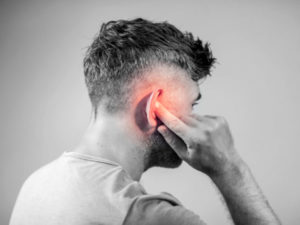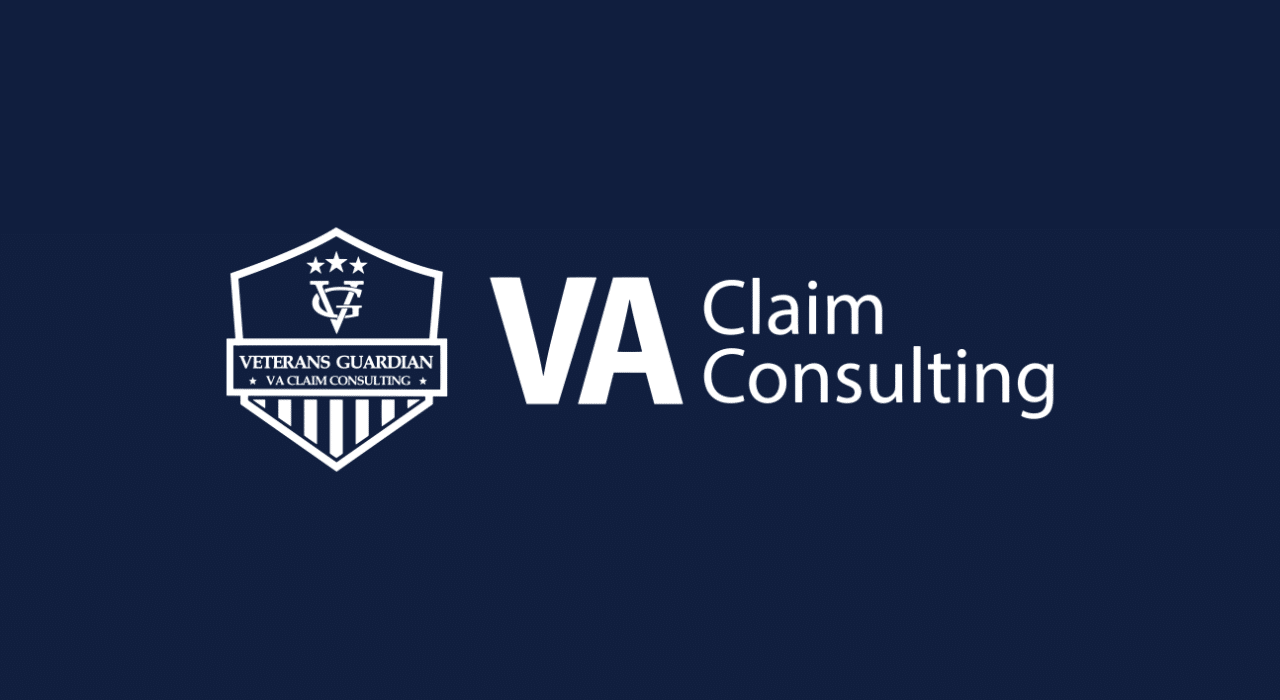- Tinnitus
- Limitation of Flexion of the Knee
- Paralysis of the Sciatic Nerve
- Hearing Loss
- Lumbosacral or cervical stain (back and neck strains)
- Post-Traumatic Stress Disorder (PTSD)
- Limitation of Motion of the Arm
- Limitation of Motion of the Ankle
- Migraines
- Scars, General
#1 of 10 Most Common VA Disability Claims: Tinnitus
The most common VA Disability Claim is tinnitus. According to 2023 VA disability claims statistics, Tinnitus was the most common VA disability claim. In total, there were 2,944,093 million compensation recipients. Tinnitus manifests as the perception of noise or ringing in the ears without any external source. Individuals often describe the sound as ringing, buzzing, humming, hissing, or clicking. This auditory phenomenon varies in intensity, pitch, and duration, and may occur intermittently or persistently.
The VA’s highest rating for tinnitus is 10%. Those most vulnerable to this condition often work in environments with elevated noise levels.
Your VA claim for tinnitus can be submitted as a secondary disability, aggravated by a range of conditions including head and neck disorders, Meniere’s disease, depression, anxiety, PTSD, traumatic brain injury (TBI), hearing impairment, temporomandibular joint disorder (TMD), and hypertension, among others.
#2 of 10 Most Common VA Disability Claims: Limitation of flexion, knee
Limitation of flexion, knee was the #2 most commonly claimed disability for all Veterans, with 1.8 million claims in 2023.
Musculoskeletal system conditions include issues with joints and muscles and must involve (1) limitation of range of motion (flexion) and/or (2) painful motion.
Limitation of flexion in the knee refers to a reduced ability to bend the knee joint fully. This limitation can result from various factors such as injury, arthritis, muscle weakness, or surgical procedures involving the knee. It can affect a person’s ability to perform activities that require bending the knee, such as walking, climbing stairs, or squatting. Depending on the severity of the limitation, it may impact daily functioning and quality of life.
Secondary VA disability claims can extend to musculoskeletal disabilities, which may be triggered or exacerbated by various factors, including medication side effects, depression, anxiety, PTSD, traumatic brain injury (TBI), Temporomandibular Joint Disorder (TMD), injuries affecting the opposite side of the body (reciprocal injuries), and conditions affecting the spine, neck, back, hips, arms, legs, and feet, among others.
#3 of 10 Most Common VA Disability Claims:Paralysis of the Sciatic Nerve
Based on the latest 2023 VA data, Paralysis of the Sciatic Nerve, also known as Sciatica, was the #3 most common VA disability claims for all Veterans, across all demographics.
92.2% of Veterans are rated between 0% and 20%.
Musculoskeletal system conditions include issues with joints and muscles and must involve (1) limitation of range of motion (flexion) and/or (2) painful motion.
Back injuries and various musculoskeletal injuries, which can lead to Sciatica, or severe radiating pain, are quite common for veterans.
Sciatica is the pain that one experiences when the sciatic nerve is irritated.
Sciatica is not an actual diagnosis of a problem, but rather, an accurate way of describing the location of the pain.
What is Sciatica?
Sciatica refers to pain that radiates along the path of the sciatic nerve, which branches from your lower back through your hips and buttocks and down each leg. Sciatica typically affects only one side of your body.
Sciatica most commonly occurs when a herniated disk, bone spur on the spine, or spine narrowing (spinal stenosis) compresses part of the nerve. This causes inflammation, pain, and often some numbness in the affected leg.
Common symptoms of sciatica include:
- Pain: You may experience a sharp, shooting pain that makes it difficult to stand up or walk. The pain may worsen when you cough or sneeze.
- Numbness or tingling: You might feel numbness or a pins-and-needles sensation in your leg or foot.
- Weakness: Muscles along the sciatic nerve path may weaken, affecting one’s ability to lift one’s foot or move one’s toes.
#4 of 10 Most Common VA Disability Claims: hearing loss
It is very common for hearing loss to be rated at 0%,unless you are able to get your hearing loss service connected.
The Audiogram is the only way to detect and diagnosis hearing loss!
If you have hearing loss, that does not mean that it is significant enough by VA standards to receive compensation.
The first step is to prove that you have a certain level of hearing loss.
The VA considers two factors for rating hearing loss after an examination:
Decibel loss at five different frequency ranges (low to high)
An audiogram measures the level of decibel loss at the various thresholds.
For VA purposes, an average loss of 26 or more decibels in three of the five frequency ranges constitutes hearing loss.
Speech discrimination — how well you can hear normal conversation
This test involves the presentation of a series of monosyllabic words and determining how well you can hear them.
A “speech recognition” score of lower than 94% corresponds to a number related to hearing loss.
Even if an audiogram shows that one ear is 100% deaf, you are still not guaranteed compensation.
If the hearing loss in the other ear is not significant, your likelihood of receiving benefits decreases.
Service Connected Hearing Loss
The second step relates to service-connection for the hearing loss.
Determining that your hearing loss is connected to your time in service can make or break whether you receive compensation.
VA audiologists infrequently link hearing loss with noise exposure in service if there is any other plausible contributing cause.
Depending on your MOS, your chances of getting benefits may increase or decrease.
CHECK OUT OUR VA DISABILITY CALCULATOR#5 of 10 Common VA Disability Claims:
Lumbosacral or Cervical Strain
92.2% of Veterans were rated between 0% and 20%.
Musculoskeletal system conditions include issues with joints and muscles and must involve (1) limitation of range of motion (flexion) and/or (2) painful motion.
Lumbosacral or cervical strain is an injured, stretched, or torn muscle or tendon in your neck.
Lumbosacral or cervical strain is medically linked to overuse and trauma.
This condition can be very painful although it’s commonly treated with over-the-counter pain medications.
Because of this pain, veterans typically suffer from limitation of range of motion of the neck.
VA ratings for lumbosacral and cervical strain fall under Diagnostic Code 5237. Ratings are anywhere between 0 percent and 100 percent.
#6 of 10 Most Common VA Disability Claims: Post traumatic stress disorder (PTSD)
The 2023 secret VA data shows that PTSD was the #6 most common VA disability claims for all Veterans, across all demographics.
For example, 90.7% of Veterans were rated at 30% or higher for mental health, while 41.1% of Veterans were rated at 70% or higher.
Therefore, mental health conditions, including PTSD, major depressive disorder, generalized anxiety disorder, somatic symptom disorder, among others, are “high-value” claims.
We call mental health conditions high-value claims because they have a very high likelihood of getting rated at 30% or more.
Post-traumatic stress disorder (PTSD) is a mental health condition, which is “triggered” by a terrifying event—either experiencing it or directly witnessing it.
Some mental health symptoms include flashbacks, nightmares, anxiety, depression, insomnia, suicidal thoughts, anger issues, work problems and relationship issues.
All VA mental health claims fall into one of three categories: 1) PTSD Combat, 2) PTSD Non-Combat / Military Sexual Trauma (MST), and 3) All Other Mental Health Conditions.
PTSD always has in-service stressors, which cause or make the PTSD worse, such as exposure to death, threatened death (fear or hostility), actual serious injury, threatened serious injury, actual sexual violence and threatened sexual violence.
Non-combat PTSD stressors include things such as PTSD MST, service-member suicide, serious car accidents, training accidents, victim of rape and witnessing a rape, among others.
Moreover, PTSD can worsen if the Veteran has either of medication side effects, tinnitus, chronic pain, TBI, sleep apnea or insomnia.
To file a claim that will qualify you for the disability benefits due to PTSD or any other type of mental health condition (there are 37 ratable VA mental health conditions under the law.
Here are some mental health VA claim tips and evidence requirements for each:
PTSD first-time filer
If you are a Veteran filing a VA disability claim for PTSD for the very first time, you must meet the following evidence requirements: identification of in-service stress indicating the salient information such as dates, description, geographic location, unit assignment and dates of assignment; statement in Support of Claim for Service Connection for PTSD; Statement in Support of a Claim – VA Form 21-4138; Buddy letter/s (highly recommended; and C&P Examiner will complete the DBQ for PTSD Initial.
PTSD increase
If you are already rated for PTSD by the VA, but believe you are underrated and deserve a higher VA rating based upon your symptoms, we highly recommend the following supporting evidence: DBQ for PTSD Review completed by a U.S. Board Certified Psychologist, Statement in Support of a Claim – VA Form 21-4138 and buddy letters.
These documents are important because you must show that your PTSD symptoms are worse, which means you qualify for the higher PTSD rating criteria under the law.
Other Mental Health Conditions
Anything that’s not PTSD falls under the category of “Other Mental Health Conditions and include things such as major depressive disorder VA claim, generalized anxiety disorder VA claim, and somatic symptom disorder.
We recommend obtaining a DBQ for Other Mental Health Conditions completed by a U.S. Board Certified Psychologist, Medical Nexus letter for the first-time filer, Statement in Support of a Claim – VA Form 21-4138 and buddy letters.
Buddy letters are especially crucial if lay evidence is needed to further substantiate the approximate timeframe that your mental health condition was caused or made worse by your active duty military service.
This is legally referred to as the “Nexus” to prove service-connection. In the absence of medical evidence, VA raters will consider first-hand witness testimony (buddy letters) to help make their decision.
Schedule My Call Now#7 of 10 Common VA Disability Claims: limitation of motion of the arm
The VA disability rating for arm limitations can vary depending on factors such as the severity of the limitation, whether it affects the dominant or non-dominant arm, and whether additional disabilities or complications are present. Ratings for arm limitations are usually based on the extent of impairment and its impact on functional abilities.
Arm motion limitations can stem from a variety of causes, ensuring that your specific situation is understood and addressed. These causes can include:
- Injury or Trauma: Past injuries or trauma to the arm, such as fractures, dislocations, or soft tissue injuries, can reduce range of motion.
- Arthritis: Conditions like osteoarthritis or rheumatoid arthritis can lead to joint inflammation and stiffness, limiting arm movement.
- Neurological Conditions: Disorders affecting the nerves or muscles of the arm, such as stroke, nerve compression syndromes (like carpal tunnel syndrome), or conditions like muscular dystrophy, can cause weakness or paralysis, affecting arm movement.
- Surgical Procedures: Arm surgeries, such as joint replacement or repair surgeries, can sometimes result in a limited range of motion during recovery.
- Chronic Pain: Persistent pain in the arm, whether due to injury, nerve damage, or other causes, can lead to avoidance of specific movements, resulting in decreased range of motion over time.
- Psychological Factors: Fear of pain or reinjury, anxiety, or other psychological factors can also contribute to limitations in arm movement.
Treatment for arm motion limitations can vary depending on the underlying cause and may include physical therapy, medication, assistive devices, surgery, or a combination of these approaches.
#8 of 10 Most Common VA Disability Claims: Limitation of Motion of the Ankle
Based on the latest 2023 VA data, Limitation of Motion of the Ankle was the #8 most common VA disability claims for all Veterans, across all demographics.
Musculoskeletal system conditions include issues with joints and muscles and must involve (1) limitation of range of motion (flexion) and/or (2) painful motion.
VA ratings for the ankle are usually at 0 percent and 10 percent. Some go as high as 20 percent.
Symptoms associated with musculoskeletal system conditions include limitation of range of motion (flexion), painful motion, arthritis, weakness, easily fatigued, loss of power, lack of coordination and decreased movement control.
Musculoskeletal disabilities can also be filed as secondary VA disability claims, and can be caused or made worse any of the following conditions: medication side effects, depression and anxiety, PTSD, TBI, Temporomandibular Joint Disorder (TMD), right side of body injuries affect left side of body (& vice versa) and spine, neck, back, hips, arms, legs, and feet, among others.
#9 of 10 Most Common VA Disability Claims: Migraines
Based on the latest 2023 VA data, Migraines were the #9 most common VA disability claims for all Veterans, across all demographics.
Migraines are a high-value claim because there is a high likelihood of getting rated at 30 percent or higher.
Migraine headaches and tension headaches are two very different things.
Migraines are a serious neurological condition rated between 0 percent and 50 percent.
| 8100 Migraines VA Rating Criteria: | Rating |
| With very frequent completely prostrating/prolonged attacks productive of severe economic inadaptability | 50% |
| With characteristic prostrating attacks occurring on an average once a month over the last several months | 30% |
| With characteristic prostrating attacks averaging one in 2 months over the last several months | 10% |
| With less frequent attacks | 0% |
Common symptoms of Migraines include throbbing pain, nausea, dizziness, and sensitivity to light and sound.
A migraine is usually characterized by a pulsing sensation on the side of the head. In fact, pain could last hours or days depending on the severity of the pain.
For VA rating purposes, the term “prostrating” is very important because it indicates the severity of your Migraines.
Prostrating simply means that your migraines are so severe, that you have to lay down.
#10 of 10 Common VA Disability Claims: Scars/general
Scars were the #10 most compensated claims for all Veterans across all demographics.
The VA interprets ratings for scars based on the extent of disfigurement and functional impairment caused by the scar. Scars can result from various causes, including injury, surgery, burns, or medical conditions. When evaluating scars for disability compensation, the VA considers factors such as:
- Size and Location: The size and location of the scar can affect its visibility and functional impact. Scars in highly visible or functionally essential areas like the face, hands, or joints may receive higher ratings.
- Appearance: The severity of the scar’s appearance is assessed, including factors such as color, texture, and contour. Scars that are highly disfiguring or cause significant cosmetic deformity may receive higher ratings.
- Functional Impairment: The extent to which the scar limits functional abilities is considered. For example, scars that restrict the range of motion or cause pain with movement may receive higher ratings.
- Associated Symptoms: Pain, itching, or sensitivity in the scarred area may also be considered.
76.2% of Veterans are rated at 0% for skin conditions, and 18.6% have a 10% rating for skin conditions. Veterans can take color photos of skin conditions for their VA Claims File, also known as their C-File.
Once you prepare and file your own VA claim, you can upload the color photos to your eBenefits account or VA.gov account. By uploading color photos, you’ll give the C&P examiner and VA Rater detailed evidence of your scars, which could affect your final VA rating for scars.















